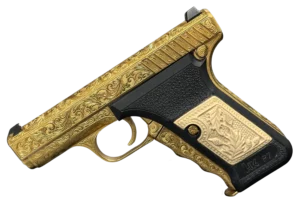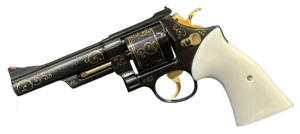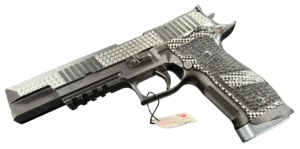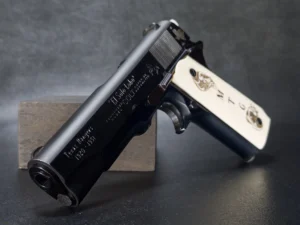Key Takeaways:
- Collecting Firearms Is About Stories, Not Just Steel: It’s easy to get caught up in the technical specs or chasing the rarest model, but what really makes a collection meaningful is the history behind each piece. Whether it’s a musket from the Civil War or a lesser-known prototype from the Cold War, every firearm carries a story, and that’s what collectors are truly preserving.
- Know the Law, Respect the Legacy: Owning historical firearms comes with real responsibility. Staying current on changing laws, storing your collection securely, and avoiding pieces with questionable origins isn’t just smart—it’s part of being an ethical, thoughtful collector. Passion and respect should go hand in hand.
- The Best Collections Are Built Slowly—and Personally: There’s no rush. The most rewarding collections grow over time, guided by personal interest rather than price tags. Whether you’re drawn to WWII service pistols, 19th-century revolvers, or obscure innovations that never quite caught on, follow your curiosity. That’s where the magic happens.
So, you’re thinking about collecting firearms—or maybe you’ve already started and want to take it up a notch. Either way, welcome to one of the most fascinating and rewarding hobbies out there. It’s more than just a pastime—it’s part history, part craftsmanship, and part detective work. Every piece tells a story, and once you’re hooked, you’ll find yourself chasing not just rare metal but moments in time.
Let’s walk through what makes this pursuit so captivating in 2024 and how to do it right, from history and technology to legal nuances, valuation tips, and how to care for your collection like it’s a museum in your own home.
History Isn’t Just in Books—It’s in Steel and Wood
Let’s start with the obvious: historical firearms are at the heart of this whole thing. That old revolver in your grandfather’s attic? It’s not just a weapon—it’s a time capsule. Owning a piece like a Civil War musket or a WWII-era sidearm connects you to real people, real events, and real stories. These aren’t just curiosities behind glass—they’re echoes of the past you can hold in your hands.
But—and this is important—it’s not just about how old something is. Context matters just as much. Was the gun carried at the Battle of the Bulge? Did it belong to someone notable? Those details can transform a common model into a prized collector’s item. Do your research, double-check provenance, and don’t be afraid to go down the occasional rabbit hole on wartime archives or serial number registries. That’s half the fun.
Original condition is the gold standard, sure—but don’t discount well-done restorations. Sometimes, the right kind of wear tells a better story than pristine finishes. A thoughtful collection balances both—untouched time travelers alongside lovingly restored masterpieces.
Firearms: A Front-Row Seat to Human Ingenuity
Now let’s talk tech. The evolution of firearms is a masterclass in problem-solving. What started with crude matchlocks and hand cannons has morphed into precise, modern-day marvels. And you get to collect that entire journey.
Those early innovations—flintlocks, wheel locks, percussion caps—may seem outdated today, but they were once revolutionary. Every strange little mechanism reflects the thinking of a specific time and place. Then came the 20th century’s seismic shift: semi-automatics, magazine-fed systems, and polymer frames. Suddenly, guns weren’t just functional—they were mass-producible, reliable, and built for modern warfare and civilian use alike.
Some of the most interesting pieces? The ones that were a little too ahead of their time. Guns like the Dardick or the Gyrojet may not have changed the world, but they sure make for great conversation starters. They’re the what-could-have-beens, and collecting them feels like owning a page from an alternate history book.
Understanding how these designs work—not just what they look like—deepens your appreciation. You don’t need to be a gunsmith, but having a basic grasp of actions, calibers, and mechanisms helps you see the bigger picture.
Law, Ethics, and Common Sense
Okay, let’s shift gears and talk about the stuff no one gets excited about—but absolutely should. Laws. Permits. Ethics. Yeah, it’s not as thrilling as uncovering a rare prototype, but if you plan to keep collecting for years to come, you’ve got to know the rules.
Gun laws can be a maze. They vary not just from country to country, but often from state to state. What’s perfectly legal in Arizona might get you in trouble in New York. And that applies to buying, selling, transporting, and even displaying your collection. The golden rule? Know before you collect. Ignorance isn’t just risky—it can be downright costly.
Now, about ethics. Be thoughtful. Avoid firearms with murky or exploitative histories. This isn’t about being politically correct—it’s about honoring the integrity of the collection. These objects often come from times of conflict, loss, or political strife. Treat them with the respect they deserve.
And please, store your collection safely. Locked cabinets, proper humidity control, maybe even insurance. It’s not just about keeping your pieces in mint condition. It’s about keeping people safe. A good collector isn’t just passionate—they’re responsible.
Hunting for Treasure (Without Losing Your Shirt)
Let’s talk acquisitions. Finding the right piece is part art, part hustle. Some folks love the thrill of live auctions, where adrenaline runs high and paddles fly. Others prefer gun shows or online platforms like GunBroker or Rock Island Auction Company. Wherever you’re looking, patience pays off.
First rule of buying? Know what you’re looking at. Condition, rarity, provenance—all matter. A rare variant in so-so shape might be worth more than a minty mass-market piece. On the flip side, a common firearm in factory-fresh condition might surprise you in value. Learn to look beneath the surface.
Don’t go it alone, either. Build relationships with other collectors, trusted dealers, and historians. These people often have leads on private collections or deals that never hit the open market. And they can help you avoid scams—because yes, sadly, those exist.
Also, think long-term. A good collection doesn’t come together overnight. It builds slowly, piece by piece. Focus on what excites you. Some collectors chase a certain era; others focus on a brand, a war, or a mechanical innovation. There’s no right way—only your way.
Bringing Your Collection to Life
Now, what do you do with all this history once you own it? You display it—carefully, creatively, and proudly.
Start with storage and maintenance. Firearms, especially old ones, can be sensitive to temperature, humidity, and dust. Use proper gun oils. Keep them clean. If you’re displaying them, UV-filtered lighting and dehumidifiers go a long way. Mounts and cases should protect, not just show off.
When it comes to displaying your collection, think like a storyteller. Maybe you group them by war era, mechanical evolution, or geographic origin. Maybe you pair a firearm with letters, medals, or uniforms from the same period. Suddenly, you’re not just showing guns—you’re creating a historical exhibit.
Not everyone will understand this passion. That’s okay. But when someone does? There’s a spark—a shared appreciation for the beauty of form and function, and the stories these tools carry.
Wrapping It Up—But Not Tying a Bow on It
So here we are. Firearm collecting in 2024 is vibrant, meaningful, and as rewarding as ever. It’s not about building an arsenal—it’s about curating a living archive. Each firearm is a conversation starter, a slice of history, and a testament to human creativity and conflict.
This journey? It never really ends. You’ll always find one more piece you “just have to have,” one more mystery to chase. And that’s the point. It’s not about arriving—it’s about collecting stories, one trigger pull at a time.
So collect with care, curiosity, and a little bit of wonder. Because at the end of the day, you’re not just acquiring firearms—you’re preserving legacy. And that’s something worth doing right.
Happy collecting.
Frequently Asked Questions
Not at all. While a solid understanding of history or mechanics helps, it’s something you’ll pick up as you go. What matters more is curiosity. If you’re willing to read, ask questions, and occasionally fall down a Wikipedia rabbit hole at 2 a.m., you’re already halfway there.
It depends on who you ask, but generally, factors like historical relevance, rarity, condition, and provenance all play a role. Some folks collect based on wartime service, others focus on unique designs or even manufacturer quirks. The most collectible firearms usually come with a compelling backstory—or better yet, a bit of mystery.
Start with the big players—reputable auction houses, licensed dealers, and verified sellers on platforms like GunBroker. Gun shows can be great, too, but do your homework before buying. And never underestimate the power of collector communities—forums, Facebook groups, and local clubs are full of people who’ve seen it all and are often happy to help newcomers avoid common pitfalls.
Absolutely—as long as the restoration was done well and the piece has historical or mechanical significance. Original condition might be king, but restored firearms can still be valuable, especially if the work was done thoughtfully. They’re also a great way to fill in gaps in a collection without spending a fortune.
Short answer? Research and double-check. Long answer? Laws can change quickly, and they vary dramatically depending on where you live. What’s legal in Texas might be restricted in California. Talk to legal experts, stay updated with local and federal regulations, and err on the side of caution—because the “I didn’t know” defense won’t hold up in court.












